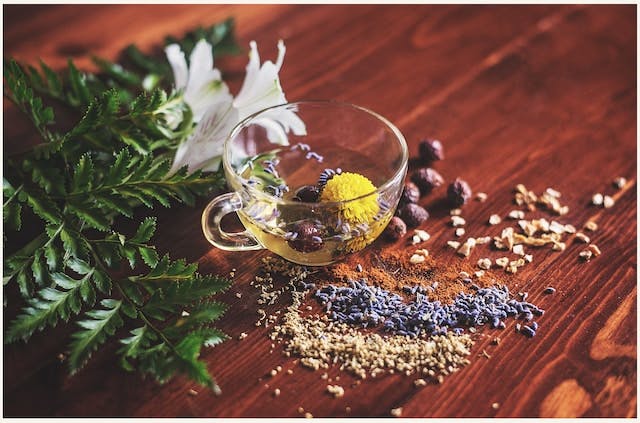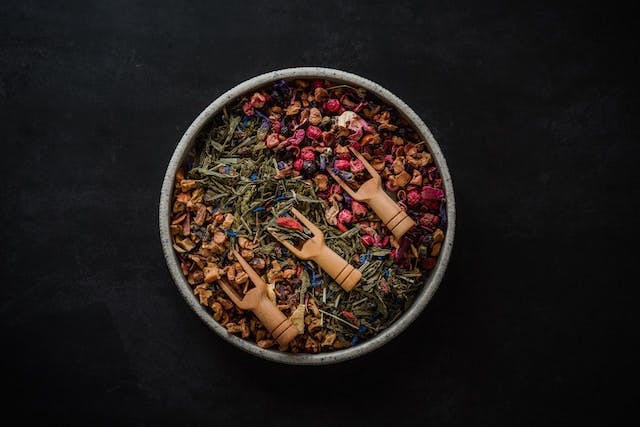Exploring Loose Leaf Tea: A Comprehensive Guide
Loose leaf tea is a phrase that is frequently used in the tea industry. This phrase describes a long-standing and still well-liked method of preparing tea. Your experience drinking tea will be considerably improved if you comprehend what loose leaf tea is and why it is significant.
Tea is a lot more than a beverage. It is a custom, a ceremony, and for many people, a way of life. Whether you've had tea before or not, learning the subtleties of tea, especially loose leaf tea, can introduce you to a whole new world of flavors, scents, and experiences.
What is Loose Leaf Tea?
What precisely is loose leaf tea, then? Instead of being sold in tea bags, loose leaf tea is sold in bulk. It is made up of whole or damaged tea leaves, which are frequently bigger than the leaves in tea bags.
The history of loose leaf tea is extensive and fascinating. The custom of consuming loose leaf tea extends back thousands of years and originated in China, the country where all tea was first consumed. The skill of brewing loose leaf tea has evolved and spread throughout time, with various civilizations creating their own special techniques and customs for this age-old beverage.
 Owner: Lisa HobbsClear tea cup on brown surface
Owner: Lisa HobbsClear tea cup on brown surfaceOne must research loose leaf tea's past and comprehend its genesis in order to appreciate it fully. The origin of the practice of brewing loose leaf tea may be traced back to the time when tea was originally discovered in ancient China.
We'll explore the various kinds of loose leaf tea and how they each provide a distinctive tea-drinking experience in the section that follows. Therefore, there's always something new to learn and discover in the world of loose leaf tea, whether you're an experienced tea connoisseur or a curious beginner.
Types of Loose Leaf Tea
There are various varieties of loose leaf tea, and each has special qualities and flavor profiles. Here are some of the most common categories in more detail:
White Tea: This tea is created from the young leaves and buds of the tea plant and is the least processed of all teas. It has a mild sweetness and a delicate, light flavor. White tea is usually brewed for a shorter period of time and at a lower temperature than other teas.
Green Tea: Known for its fresh, grassy flavor, green tea is made from tea leaves that are quickly heated after harvesting to prevent oxidation. This helps to preserve the green color and the delicate flavors. Green tea can be steeped in slightly cooler water than black or oolong teas.
Oolong Tea: This is a partially oxidized tea, falling somewhere between green and black tea in terms of flavor and color. Oolong tea can range from light and floral to dark and roasted, depending on the level of oxidation.
Black Tea: This is the most processed of all teas, fully oxidized which gives it a dark color and robust flavor. Black tea can stand up to higher water temperatures and longer steeping times.
Dark Tea: Also known as fermented or aged tea, dark tea undergoes a unique fermentation and aging process. This results in a tea with complex flavors that can change over time. Dark tea includes Pu-erh tea, a type of tea that can be aged for many years.
 Owner: Neringa NormantaiteA bowl filled with various types of herbs
Owner: Neringa NormantaiteA bowl filled with various types of herbsType of Tea | Description | Flavor Profile | Brewing Method |
|---|---|---|---|
White Tea | Least processed of all teas, made from young leaves and buds | Delicate, light flavor with a subtle sweetness | Brewed at a lower temperature and for a shorter time |
Green Tea | Made from tea leaves that are quickly heated after harvesting to prevent oxidation | Fresh, grassy flavor | Steeped in slightly cooler water |
Oolong Tea | Partially oxidized tea, falling between green and black tea | Can range from light and floral to dark and roasted | Varies depending on the level of oxidation |
Black Tea | Most processed of all teas, fully oxidized | Robust flavor | Can stand up to higher water temperatures and longer steeping times |
Dark Tea | Also known as fermented or aged tea | Complex flavors that can change over time | Varies depending on the specific type of dark tea |
The Production Process of Loose Leaf Tea
Each step in the manufacture of loose leaf tea contributes to the ultimate flavor, aroma, and quality of the beverage. Here is a quick summary:
Harvesting: This is the first step in the tea production process. The timing of the harvest depends on the type of tea being produced. For example, white tea is typically harvested in the spring, while black tea can be harvested throughout the year.
Processing: After harvesting, the tea leaves are processed, which can include withering, rolling, oxidation, and drying. The specific process depends on the type of tea being made. For example, green tea is heated soon after harvesting to prevent oxidation, while black tea is fully oxidized.
Packaging and Storage: The processed tea leaves are then packaged and kept in storage. To preserve the tea's quality and flavor, it must be stored properly. Tea leaves should be kept in a cool, dry location away from moisture, light, and scents.
Loose Leaf Tea vs. Tea Bags
When it comes to choosing between loose leaf tea and tea bags, there are several factors to consider. Here's a comparison of the two:
Quality: Loose leaf tea is typically of higher quality than tea bag tea. This is because loose leaf tea uses larger, whole leaves, while tea bags often contain smaller pieces or "dust" from broken tea leaves.
Flavor: Due to the larger leaf size, loose leaf tea often provides a more complex flavor profile compared to tea bags. The larger leaves allow for more flavor to be extracted during brewing.
Brewing Methods: Loose leaf tea requires a bit more effort to brew than tea bag tea. You'll need a teapot or infuser for the loose leaves, while tea bags are more convenient and straightforward to use.
The history of tea bags is quite fascinating. They were invented for convenience, but over time, they've evolved in terms of the materials used and the quality of tea they contain.
 Owner: freestocksSelective focus photography of petals inside glass jar
Owner: freestocksSelective focus photography of petals inside glass jarBenefits of Loose Leaf Tea
There are numerous benefits to drinking loose leaf tea, ranging from health to environmental and economic benefits:
Health Benefits: Loose leaf tea is rich in antioxidants and other beneficial compounds. The larger leaves used in loose leaf tea often mean that more of these beneficial compounds are retained compared to tea bags.
Environmental Benefits: Loose leaf tea is typically more environmentally friendly than tea bag tea. This is because it requires less packaging and the leaves are often more sustainably sourced.
Economic Benefits: While loose leaf tea can be more expensive upfront than tea bag tea, it can actually be more cost-effective in the long run. This is because the larger leaves used in loose leaf tea can often be steeped multiple times, while tea bags are typically only used once.
How to Brew Loose Leaf Tea
Brewing loose leaf tea is an art in itself, and while it may seem daunting at first, with the right tools and a little practice, you can brew the perfect cup of tea at home. Here's a simple guide to get you started:
Required Tools and Ingredients:
To brew loose leaf tea, you'll need a teapot or a tea infuser, a kettle to heat your water, and of course, your loose leaf tea. You'll also need fresh, filtered water — the quality of your water can significantly affect the taste of your tea.
Step-by-Step Brewing Process:
Measure your loose leaf tea. A general guideline is to use 1 teaspoon of tea for every 8 ounces of water.
Heat your water to the correct temperature. The ideal temperature varies depending on the type of tea.
Place your tea in the teapot or infuser, then pour the heated water over the tea.
Let the tea steep for the appropriate amount of time. This can range from 1 to 5 minutes, depending on the type of tea.
Once the tea has steeped, remove the leaves by lifting out the infuser or pouring the tea through a strainer.
Your tea is now ready to enjoy!
Tips for Optimal Brewing:
Always use fresh, cold water to heat for your tea.
Be mindful of the water temperature and steeping time, as these can greatly affect the flavor of your tea.
Try to enjoy your tea soon after brewing to experience the full flavor.
.jpg&w=3840&q=75) Owner: Kelly SikkemaBlack ceramic mug
Owner: Kelly SikkemaBlack ceramic mugFrequently Asked Questions (FAQs)
When it comes to loose leaf tea, there are several common questions that people often ask. Here are some of the most frequently asked questions and their answers:
What is the point of loose leaf tea?
The point of loose leaf tea is to enjoy a higher quality, more flavorful cup of tea. Because loose leaf tea uses larger, whole leaves, it often provides a more complex flavor profile compared to tea bags. Additionally, brewing loose leaf tea can be a relaxing ritual in itself.
How is loose leaf tea different?
Loose leaf tea is different from tea bag tea in several ways. It typically uses larger, whole leaves, which can provide more flavor during brewing. It also requires a bit more effort to brew, as you'll need a teapot or infuser for the loose leaves.
Are you supposed to drink loose leaf tea?
Yes, you are definitely supposed to drink loose leaf tea! The leaves are steeped in hot water to extract their flavor, and then the leaves are usually removed before drinking.
Is loose leaf tea in tea bags?
While most tea bags contain smaller pieces or "dust" from broken tea leaves, some companies do sell tea bags filled with loose leaf tea. These can offer a convenient way to enjoy loose leaf tea without the need for a teapot or infuser.
Conclusion
In conclusion, loose leaf tea offers a superior tea-drinking experience in terms of flavor, quality, and overall enjoyment. We've explored its history, types, benefits, and even how to brew it. Now, it's your turn to embark on your own tea journey. So, why not give loose leaf tea a try? You might just discover your new favorite beverage.
Editor & Tea Lover